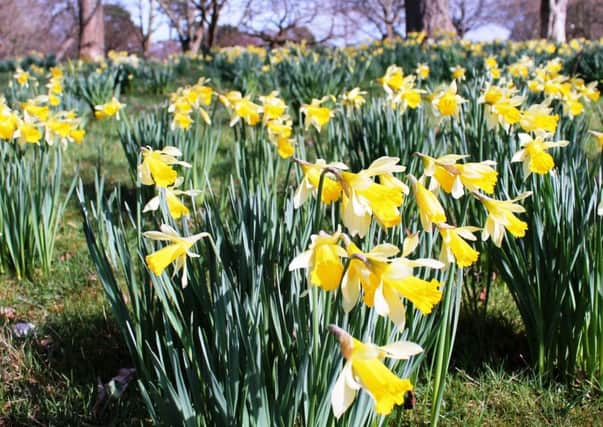Gardening: A knotty problem


There’s one particular thing that can tie a gardener in knots. It’s a perennial poser and is likely to be so until the plant involved in the problem learns to speak for itself.
And, millions of years down the line, what will the daffodil say to the strange, mutated descendants of the gardeners of the 21st century? Simple – when I have finished flowering, please, please, please do not tie my withering foliage into knots and definitely do not cut it to the ground until it has dried to the colour of ripe corn.
Advertisement
Hide AdAdvertisement
Hide AdUntil then, of course, the debate will continue to rage – to leave the leaves alone or to tie them into neat little bundles? Is it really necessary to let the leaves of daffodils die down naturally and to feed them as they wither?
They can look very untidy for several weeks, so what is the harm in practising a reef knot or two?
Well, if you want a good show of blooms next year, then the answer is yes to both questions.
Don’t cut the foliage; don’t tie it into those tidy knots – leave it alone for at least six weeks after the flowers have finished putting on their spring show. And feed it with a tomato fertiliser which, when watered over the foliage, will help build up the underground bulbs so they can put on a good show in 2018.
Advertisement
Hide AdAdvertisement
Hide AdIf all the dying foliage is too much to bear, grow leafy herbaceous plants which will hide the daffs once they are past their best.
And if you haven’t the space to keep daffs in the ground all year round, dig them up when they’ve finished flowering and replant in a trench in a sunny spot. Add the feed to the soil and then leave well alone for that magic six weeks.
When the leaves are well and truly dead, lift the bulbs, clean them and store them in a cool, dry spot until it’s time to replant them in autumn.
Before you do, check them over and dump any which show signs of damage or disease. The healthier the bulbs, the better the chance that they will bloom well next spring.
The same applies to tulips, many of which are best lifted and stored until they can be re-planted in the autumn.